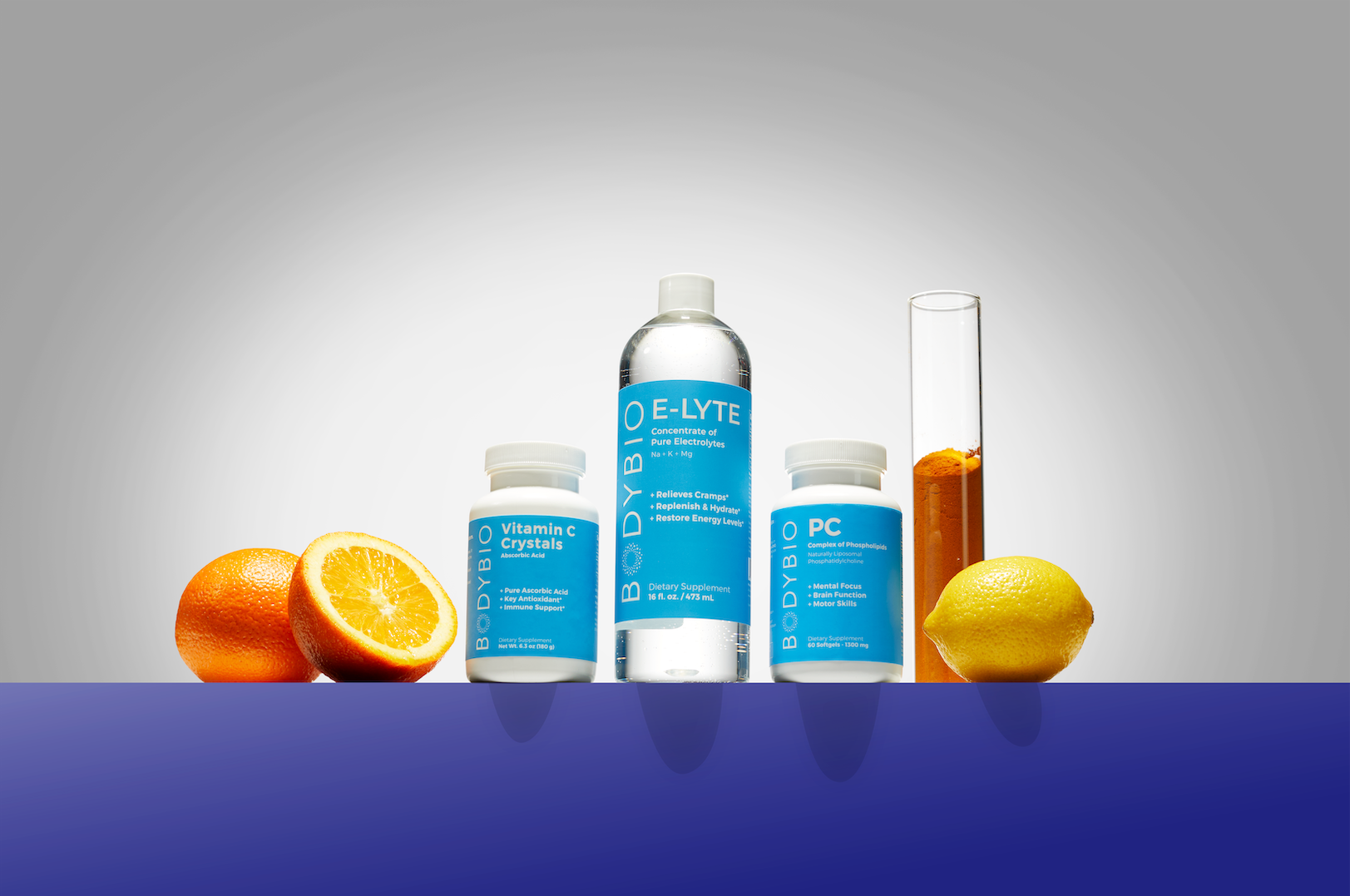BodyBio Tips for a Healthy Immune System
Authors:

Dr. Thomas Wnorowski
PhD, CNCC Research Director, BodyBio & Biomedical NutritionistCoronavirus. If you turn on your TV or radio or tune into your favorite podcast, news of the virus’s spread across the globe is unavoidable. While there is reason to share concern with the news coming out of the CDC and WHO, it’s important as a first measure of defense to remain calm and follow their recommendations.
The corona virus has been with us for a long time. Corona causes the common cold. But this particular strain, COVID-19, hunkers down in the respiratory system, roughs up your lung cells, instigates pneumonia and raises the chances for a complicated experience.
PC: The cell membrane’s role in immunity
The membrane cells that are first to meet viruses make chemicals called defensins with leukocytes and epithelial cells among them. In a healthy membrane, defensins are as potent as they were created to be and are able to “sweep” invaders from the membrane surface before they can enter. With collagen keeping the membrane resilient, and defensins sweeping the “driveway” clean, the immune system has the time and opportunity to rid itself of alien attack. BodyBio PC and its related lipid comrades keep the membrane in healthy condition*.
Vitamin D
Trying to explain why people in the tropics and semi-tropics get fewer colds than we in the northern latitudes is a multi-pronged affair. In the colder climes, we spend more time indoors, in closer contact to classmates, to family who may bring things home from school or work, and to fellow passengers in public transportation, where coughing and hacking exudes have no place to go…except into the lungs of those nearby. But there’s more—vitamin D. Not really a vitamin, but a steroid, its role in modulating the immune system function is well accepted. Those living in the lower latitudes are exposed to more sunlight because the sun’s angle of incidence is more direct and, being warmer, invites people to stay outside longer. If their cholesterol levels are on the mark, they’ll be able to make enough vitamin D to meet the immune challenge. We, in the north, need to supplement.
Vitamin C
Vitamin C is water-soluble, so needs a daily refreshment. Side effects from too much vitamin C are rare. The RDA is just enough to ward off scurvy, but not enough to fill cells to the point of resisting pathogen attack. Orthomolecular practitioners and their followers have demonstrated the antiviral power of vitamin C for a long time. This will not be shouted to the rooftops by the traditional media outlets. Vitamin C is not an alternative to what your doctor suggests or prescribes, but is an integrated entity.
BodyBio Vitamin C is as bioavailable as can be while Buffered C has not been proven to increase absorption. Because some vitamin C tabs are difficult to swallow, a powdered form makes sense. But don’t keep it in contact with your teeth too long after mixing with a liquid. The acid can damage enamel. BodyBio has a pure, non-GMO vitamin C crystal that is made in an NSF facility and is easy to get down, with a quarter teaspoon serving offering one thousand milligrams (a gram). Take this dose three times a day.
Dr. Tom on Vitamin C: Virus pathogens need to enter our cytoplasm to reproduce. Simplicity tells us that, if a virus cannot enter a human cell, it cannot reproduce. That would leave it outside, in an area that makes it vulnerable to the heroes of the immune system.
We take Vitamin C to ensure sufficient collagen during the seasonal attacks we endure*. Collagen is the “glue” that holds us together and gives cells their resilience and integrity. If an invading pathogen is bounced off, it then has no access to the cytoplasm and the cell nucleus. A thousand milligrams of Vitamin C three times a day should suffice during the cold/flu season. Amino acids proline and lysine (most often found in protein) will also help collagen production.
What else to do? Washing hands long enough to sing a happy birthday song twice is probably the best defense against any pathogen. At the same time, keeping hands away from the face will prevent the passage of the enemy into the body.

Cannell JJ, Vieth R, Umhau JC et al. (2006) Epidemic influenza and vitamin D. Epidemiol Infect. 134:1129-1140.
Cannell JJ, Zasloff M, Garland CF et al. (2008) On the epidemiology of influenza. Virol J. 5:29.
Ginde AA, Mansbach JM, Camargo CA Jr. (2009) Association between serum 25-hydroxyvitamin D level and upper respiratory tract infection in the Third National Health and Nutrition Examination Survey. Arch Intern Med. 169:384-390.
Gonzalez MJ, Berdiel MJ, Duconge J (2018) High dose vitamin C and influenza: A case report. J Orthomol Med. June, 2018, 33(3).
Gorton HC, Jarvis K (1999) The effectiveness of vitamin C in preventing and relieving the symptoms of virus-induced respiratory infections. J Manip Physiol Ther, 22:8, 530-533.
Hemilä H (2017) Vitamin C and infections. Nutrients. 9(4). pii:E339.
Martineau AR, Jolliffe DA, Hooper RL et al. (2017) Vitamin D supplementation to prevent acute respiratory tract infections: systematic review and meta-analysis of individual participant data. BMJ. 356:i6583.
Urashima M, Segawa T, Okazaki M et al. (2010) Randomized trial of vitamin D supplementation to prevent seasonal influenza A in schoolchildren. Am J Clin Nutr. 91:1255-60.
Yejin Kim, Hyemin Kim, Seyeon Bae et al. (2013) Vitamin C is an essential factor on the anti-viral immune responses through the production of interferon-α/β at the initial stage of influenza A virus (H3N2) infection. Immune Netw. 13:70-74.
